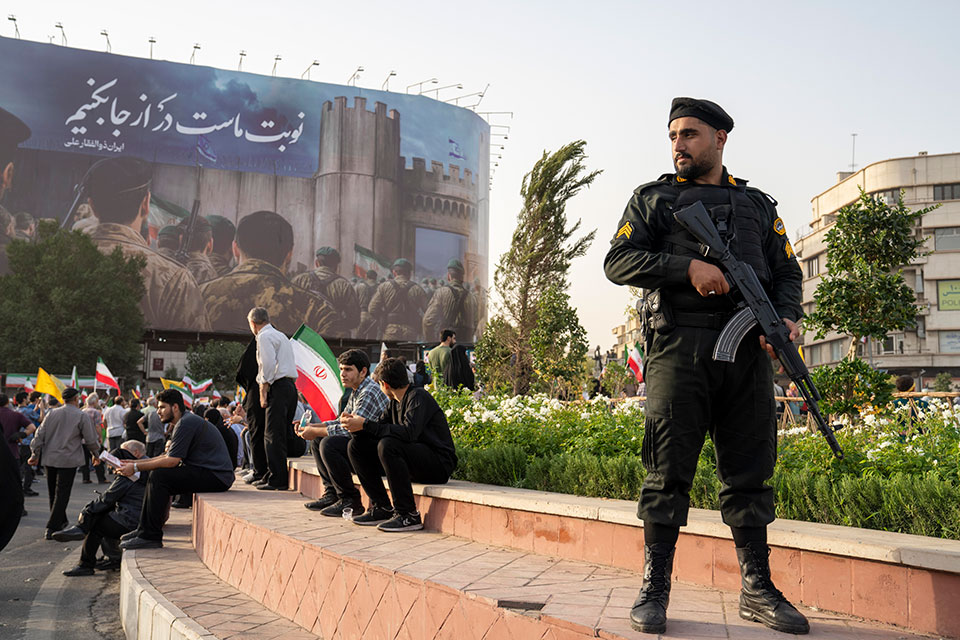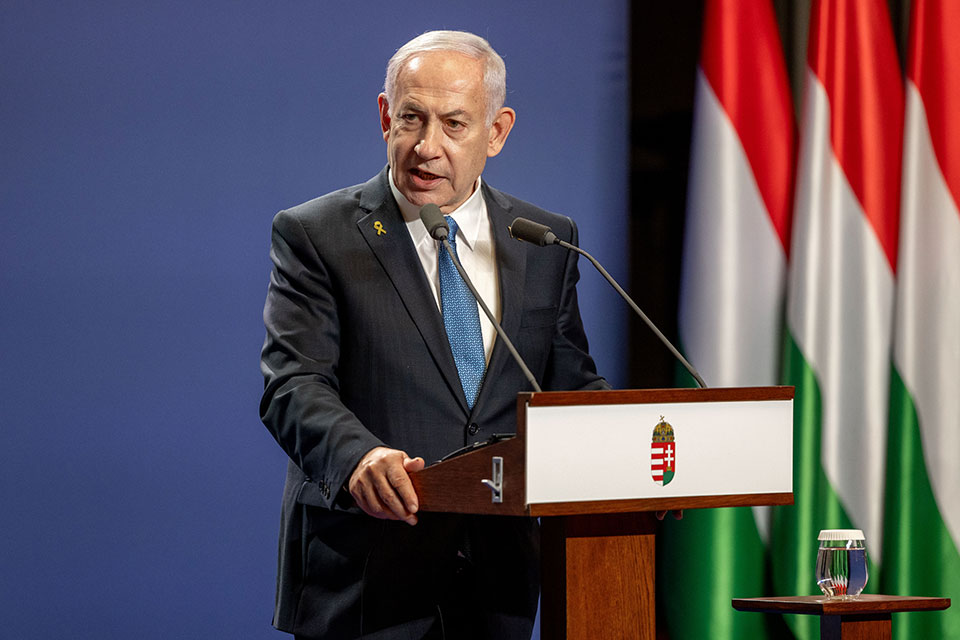Inside Iran: The political and economic road ahead
A Q&A with Professor Nader Habibi on sanctions, military action and what comes next

Photo Credit: Majid Saeedi/Getty Images
June 25, 2025
Following recent military strikes by Israel and the United States, Iran’s already fragile economy faces new strains. Professor Nader Habibi, the Henry J. Leir Professor of the Economics of the Middle East in the Crown Center for Middle East Studies at Brandeis University, reflects on the internal and external pressures shaping Iran’s future — from economic sanctions and political unrest to diplomacy and geopolitical uncertainty.
What is the current state of the Iranian economy following recent military action?
It has gone from bad to worse. The Iranian economy was already struggling under the weight of sanctions, chronic water and electricity shortages and mismanagement. Now, the recent conflict has delivered an additional shock. Nearly seven million people fled major cities, including the capital, during the 12-day war with Israel. Though many are slowly returning, the disruption has been significant.
If the ceasefire holds, this may be a temporary setback. But there could be longer-term consequences, especially if Iran’s response to the U.S. and Israeli strikes provokes further sanctions. For instance, Iran’s parliament approved a suspension of cooperation with the International Atomic Energy Agency. That alone could trigger sanctions from European nations, as their agreement with Iran includes a clause that automatically reinstates penalties if Iran is seen as violating nuclear commitments. More sanctions would only intensify economic pressure.
Much depends on Iran’s next move. If this leads to negotiations or a shift in policy, we could see a partial lifting of sanctions, which would help. But if the government adopts a more confrontational stance, we might witness continued Israeli strikes, possible further U.S. action, and definitely more economic hardship. So, any projection must be conditional on what comes next.
What is the mood in Iran right now?
Israel Prime Minister Benjamin Netanyahu had hoped the strikes would spark uprisings, especially given pre-existing discontent in Iran reflected in polls and opposition messaging. But that hasn’t happened. Instead, the public response has been one of shock and a focus on personal survival. While many Iranians blame the government’s foreign policy for escalating tensions, this has not led to mass protests.
There are a few reasons for this. First, protesting while the country is under attack may feel unpatriotic. Second, there is a real fear of retribution. People remember that in previous uprisings, the government responded with mass arrests, violence and even direct shootings. So, while resentment exists, many are hesitant to act.
The absence of protest doesn’t necessarily mean support for the regime — just fear and fatigue. Moving forward, sporadic protests are possible, but I believe the likelihood of regime collapse remains low.
Is the Iranian government more vulnerable than it’s been in the past? What economic, military or diplomatic leverage does it have?
Internationally, Iran has lost leverage. It’s now harder for the government to negotiate with the U.S. or Europeans, who are demanding the dismantling of Iran’s nuclear and missile programs. But domestically, it’s not necessarily more vulnerable to collapse.
Despite the shock of the strikes and the initial loss of control over its airspace, the government quickly regrouped and launched missile attacks in response — some of which penetrated Israel’s defenses. This showed some operational capability. However, in the coming weeks, we will likely see shortages of essential goods and services. Power outages were already severe before the attacks, with industries facing 4-5 hours of daily blackouts and no announced schedules. That situation has only worsened.
Still, the government has managed to “muddle through” crises like this before. There’s discontent, but also a persistent fear among the population. So, even if conditions deteriorate further, that doesn’t mean the regime will fall. It can continue functioning, albeit poorly.
What indicators will you be watching in the coming weeks and months?
First, whether the ceasefire holds. If Iran refrains from retaliating and Israel does not strike again, that would be a sign of stabilization. But there are factions within Iran — particularly radical elements — that may push for further escalation. The Supreme Leader has been silent so far, and his next public statement will be important to watch.
Second, I’m watching how much actual damage the Israeli strikes have inflicted. If most targets were military, then infrastructure may be mostly intact, and the economic trajectory — while negative — might not worsen dramatically. But if the attacks have disrupted government goods and services essential for economic and business activity, such as refined oil products and distribution of industrial inputs, the recovery could be much harder.
Third, I’m looking for signs of a policy shift. Will Iran abandon parts of its nuclear program to reduce the economic sanctions and international pressure? Or will it move in the opposite direction, accelerating nuclear activities to achieve nuclear deterrence in response to the recent setbacks?
Lastly, China and Russia will play key roles. Both countries are allies of Iran but they both prefer stability in the region. China in particular has strong economic interests in the Middle East and would benefit from a reduction of tensions between Iran and Israel. China would also like to see an end to economic sanctions on Iran, which offers many business and investment opportunities to China. I expect diplomatic efforts from both countries — not only to support Iran but to encourage it to show flexibility and reach agreements that reduce regional tensions.


